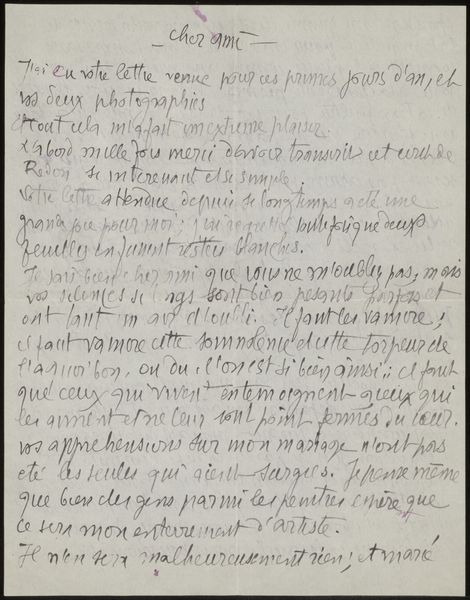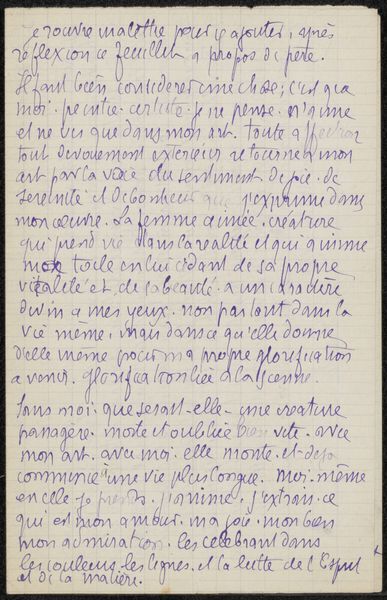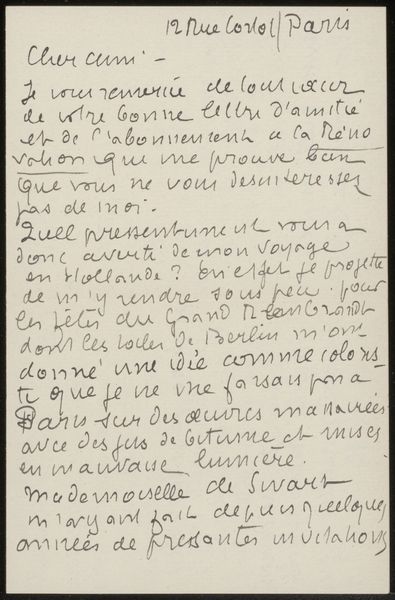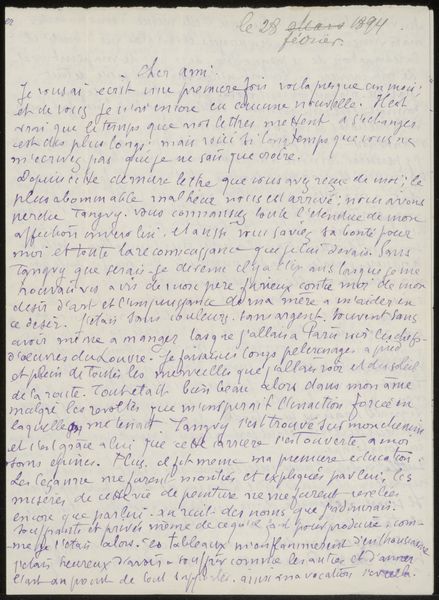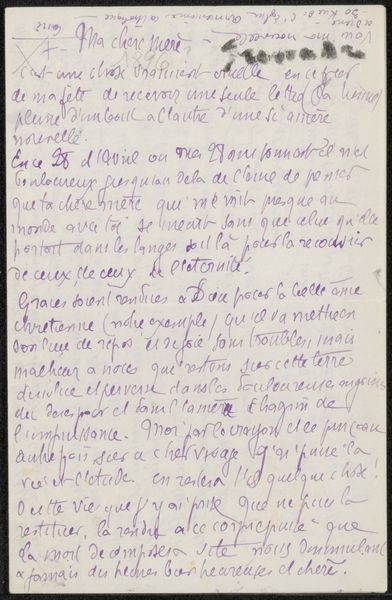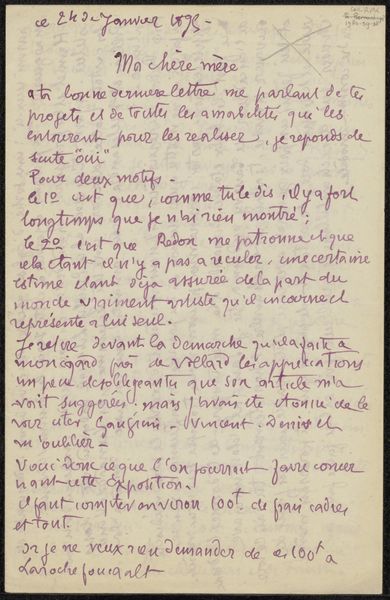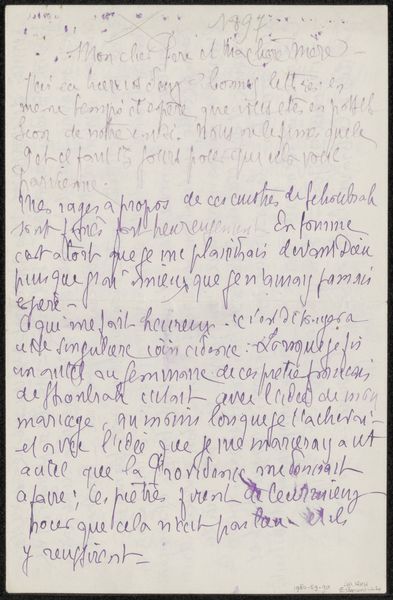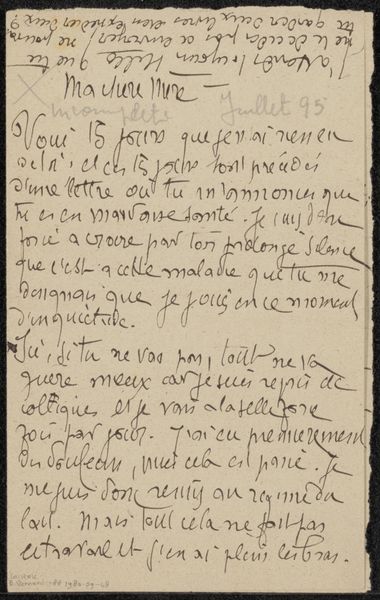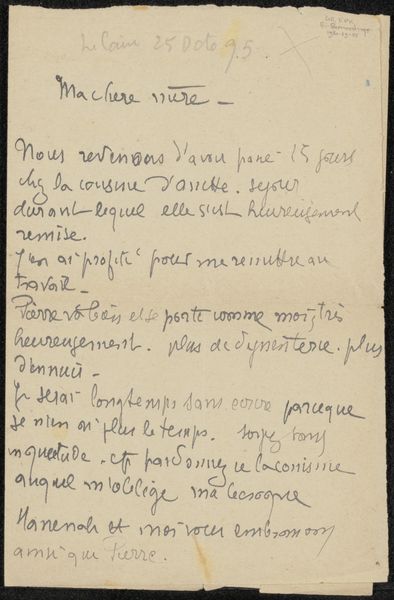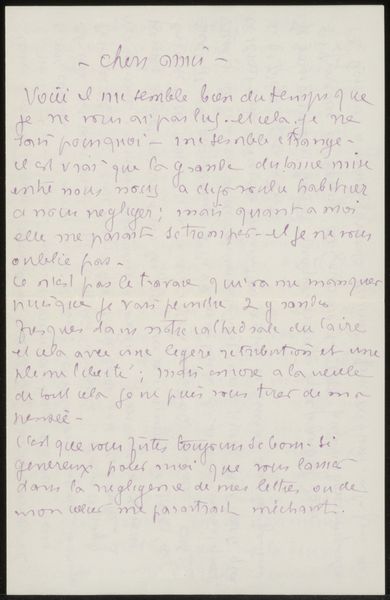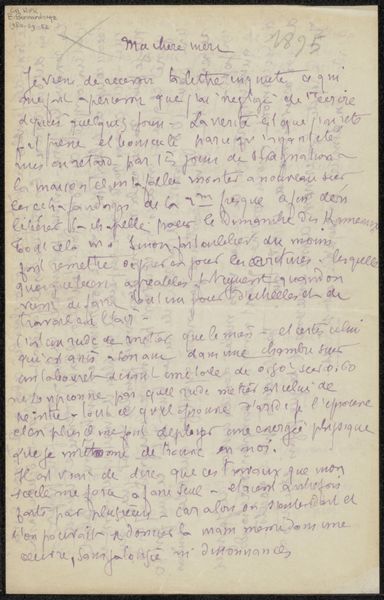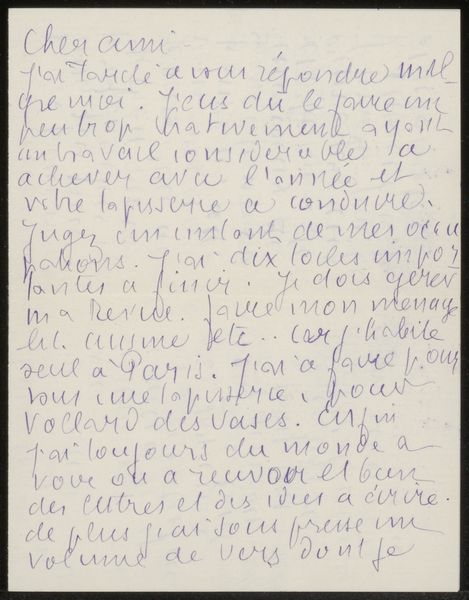
drawing, paper, pen
#
drawing
#
script typography
#
hand-lettering
#
hand drawn type
#
hand lettering
#
paper
#
hand-written
#
hand-drawn typeface
#
fading type
#
calligraphic
#
symbolism
#
pen
#
handwritten font
#
small lettering
Copyright: Rijks Museum: Open Domain
Curator: Looking at this artwork, "Brief aan Héloïse Bernard-Bodin" by Emile Bernard, dating approximately from 1878 to 1941, what strikes you first? Editor: There's an immediate sense of intimacy. The handwriting itself, in pen on paper, conveys vulnerability and closeness, but the fading ink speaks to the passage of time and potential loss of the message. Curator: The handwritten quality indeed anchors us to a specific time. Emile Bernard, known for his association with Symbolism and Post-Impressionism, often used correspondence as a means to explore ideas and maintain connections within artistic circles. The very act of writing carries symbolic weight here. It represents the desire to communicate, to leave a mark on the world, however ephemeral. Editor: I think it goes beyond simple communication. Bernard, I suspect, knew what he was doing when creating this piece, layering messages upon messages for his correspondent, possibly playing with societal expectations through each word as a member of the intelligentsia. A handwritten letter, in itself, at this time, can be construed as an act of rebellion and defiance for those outside the traditional means of influence and wealth. Who decides who receives it and benefits from that transfer? Curator: That is an important sociohistorical reading, especially within the context of late 19th-century France. However, beyond this socio-political reading, let us notice how even the imperfect legibility of the hand-lettering invites us into a kind of visual archeology. We are tasked to interpret and decipher not just the words, but also the intention and emotion imbued in each stroke, a physical rendering of thought and care that transcends mere semantic communication. We must allow for meaning and symbols that are personal to the sender as much as they speak to cultural issues. Editor: That's fair. I am often compelled to recognize the social conditions. But your view, of looking inward into the intention behind the hand, allows us to ask ourselves about what has gone unsaid between people of that time. What unspoken pressures existed, shaping communication? The deliberate act of revealing certain words, obscuring others? The materiality then makes us question its role in power relations then and today. Curator: Yes, seeing the convergence between intimate expression and the historical moment reframes our sense of both. The artifact gains depth through a multidimensional interpretation. Editor: Agreed. Thinking about those intersections allows the letter's story to continue, perhaps to rewrite, with our perspectives.
Comments
No comments
Be the first to comment and join the conversation on the ultimate creative platform.
